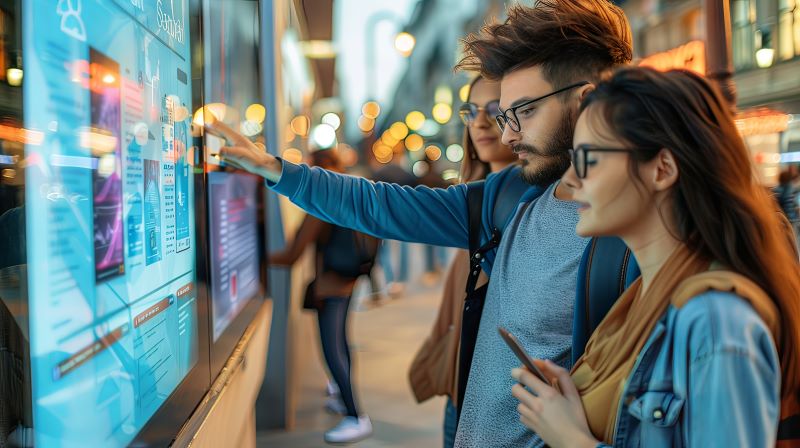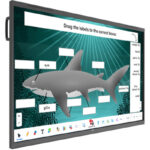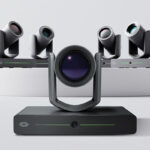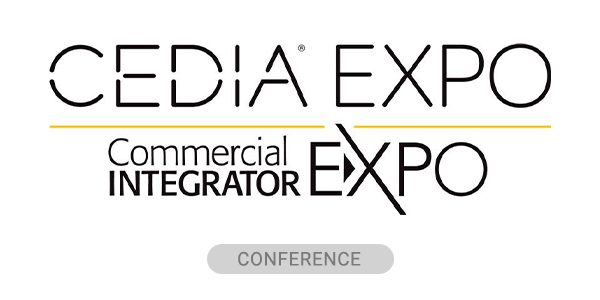A profound transformation is unfolding in the digital signage market, across all sectors, and it’s being driven in large part by DVLED (direct-view light emitting diode) technology. The DVLED market is moving away from standardized digital display packages to something that’s part of an experience, adding value. Decision makers across all vertical markets are no longer just looking at digital signage as just a TV, a display or a desktop monitor — they’re considering a more of a holistic approach to devices, enabling a digital connection to the customer. They have an expectation that the deployment of digital signage will enhance customers’ experiences.
In today’s environment, people entering facilities like arenas, concert venues, clubs or even sportsbooks expect a digital experience to be an integral part of the atmosphere — one that’s both relevant and memorable. Content must resonate with customers, creating moments that truly connect.
There are now displays of numerous sizes and form factors, with up-to-date, integrated software that coordinates messaging and advertising to customers and programming that better utilizes and monetizes the screen assets. Plus, a whole new generation of screens and programming is in development that will incorporate more and more digital real estate into building architecture.
Connectivity is at the heart of these advancements, enabling experiences that make attending live events more compelling than watching from home. Of course, deployment of DVLED technology varies across verticals, but customers are no longer looking at a device as a single component, but instead as an overarching solution. Today’s digital signage end users have a vision, and it’s manifesting itself in a lot of success with their customers, who are enjoying enhanced experiences as a result of all the technology working in unison. One thing is certain across all verticals — the game has changed.
Live Sports Is Back – In a Big (But Connected) Way
While a large part of the business economy is moving conservatively, there are certain DVLED-hungry sectors that are growing aggressively. Sports and live entertainment is one of them: we’re seeing significant activity here, and it’s easy to see why.
Attendance rates are exponentially higher around post-pandemic live entertainment, particularly sports, both at the professional and collegiate level. Some of this is thanks to the enhancement of 5G networks, allowing fans to be constantly connected to all other games taking place country-wide, while they’re enjoying the live, in-stadium experience. The overall live sports experience has completely transformed, and technology — DVLED in particular — has played a huge role in this. Everything is ticketless and cashless, so the live sports experience is a seamless transaction that flows easily. It’s become a blended connected technology experience that has vastly improved the customer experience.
Enhanced In-Stadium Experiences
With online app ordering and dynamic screens and menus, the overall in-stadium experience is vastly different from how it was a few years back. As a result, customer satisfaction at sports and entertainment venues is at an all-time high. Venues like AT&T Stadium and Truist Park are at the forefront of the adoption of new technologies, exemplifying a profound understanding of the holistic view of the customer experience that is necessary to create a successful, seamless experience that customers want to come back to. Investing in DVLED and other digital signage technologies has been key in transforming customer experiences in these cases.
A vital factor in being able to take full advantage of this growth in DLVED technology is offering a large range of solutions. With the uptick in adoption, there’s also an uptick in understanding and proficiency in the technology. Customers now understand how well the various form factors can work together, from digital kiosks to huge indoor and outdoor DVLED displays.
It’s no longer a one solution sale; it’s a connected approach to fulfilling consumer expectations with intuitive signage across a whole venue. With thoughtfully designed digital displays throughout the venue, customers stay visually connected to the game or entertainment, even when away from their seats. When you bring that together into one cohesive experience, under one streamlined and effective control scheme that’s communicating perfectly with your central operating system — the possibilities for growth in customer experience know no bounds.
DVLED: Everywhere You Look
DVLED technology is everywhere in sports. Whether it’s a stadium for baseball, football and soccer, or an arena for basketball and indoor sports like hockey, you’ve got either a center hung or a primary scoreboard. Then, there are the ribbons around the pitch or the field and around the concourse. All of that is direct-view LED technology. The signature piece — the DVLED with the highest profile — is the scoreboard. But how that scoreboard operates with the ribbons and all the other displays is what makes that experience so engaging.
When you go into an older facility, it often doesn’t have a unified control scheme, with everything working independently, a million miles away from the unified, well-connected experiences you see in a modern stadium. Take the Mercedes Benz Stadium soccer venue, for instance. When attendees walk around the stadium, perhaps away from their seats buying a beer or using the restroom during a game, they don’t miss anything because they can see a live game feed on any number of the DVLED displays situated throughout. A seamless approach to display technology enhances the in-stadium experience.
Demand for Robust SoC Systems
This is also where the SoC (System on Chip) is key, with smart signage platforms leading the way. Instead of the additional hassle of mounting traditional media players on the back of displays — being dependent on multiple layers of technology — robust SoC systems can support multiple streams of live 4K content simultaneously. An enhanced, in-stadium, DVLED display can be subdivided into multiple live streams simultaneously by stadium content partners, allowing attendees to catch a reply and events at a different sporting event while grabbing a beer while away from their seats.
That’s a luxury and a freedom that people now expect, but it’s something that commoditized, lower-cost display devices can’t support, even with additional external equipment bolted on as it just adds layers of complexity, points of failure and additional cost. This is why, although they are currently not commoditized, today’s DVLED displays — compatible with progressive content distribution models that allow guests to maintain their connectivity on multiple events simultaneously — are taking not only stadium and entertainment venues, but other sectors by storm. There are no limitations on creativity and the ability to create fully immersive experiences.
The Retail Revolution is Here
When it comes to the retail sector, we’re seeing countless product solutions that innovate. Displays in retail were traditionally inwardly focused, based on the connectivity to that customer alone. Now, there’s a massive monetization of the retail media networks; a recognition that there’s tremendous value in a retailer’s customer base.
We expect to see a tremendous growth in the investment in digital technology within the retail space as a result — one that not only connects to an individual customer, but across the whole retail space; not only connecting to the customer from the store itself, but from advertisers paying premium prices to reach customers via a brick-and-mortar store’s media network.
The retail space is changing dramatically, with a better understanding of the value of their customer base, with digital assets such as DVLED enhancing customer experience, while driving sales and adding advertising revenues. A redefinition of the entire guest interaction experience.
This, of course, isn’t possible with inferior commoditized units, and instead, we’re seeing a monetization of digital assets in just about every vertical to some degree. They’re looking at the total cost of ownership of the asset, and the biggest trend that we’re seeing in our customers is that they’re buying with a more sophisticated requirement in mind — usually a curated solution around customized specifications for their particular use case finances.
DVLED Technology Offers an Enhanced Experience
Digital displays are now being specified in a more meaningful and purposeful way, judiciously applied across customer spaces so that they actually add value, enhance the customer experience, as opposed to being an annoyance: technology for technology’s sake.
In a retail outlet, this might be asset management — the importance of the life cycle of the product: sustainability — data aggregation and the ability to help monitor who’s in the store, so that advertising agencies can select the appropriate content to drive sales and revenues. It’s probably the biggest trend we’re seeing right now. It’s about using DVLED intelligently; not merely bombarding customers with a “Minority Report” style experience for the sake of it.
The purchasing mindset is changing, with customers appreciating that DVLED technology is a mission-critical device, as opposed to a long-term, entry-level, commoditized disposable asset, with poor image quality and a higher failure rate. Customers across all verticals are looking instead at better quality, sustainable products with all the cost benefits and flexibility; a more holistic, intuitive and innovative approach to digital signage.
Tom Bingham is director of business solutions at LG Electronics USA, provider of digital signage solutions.










